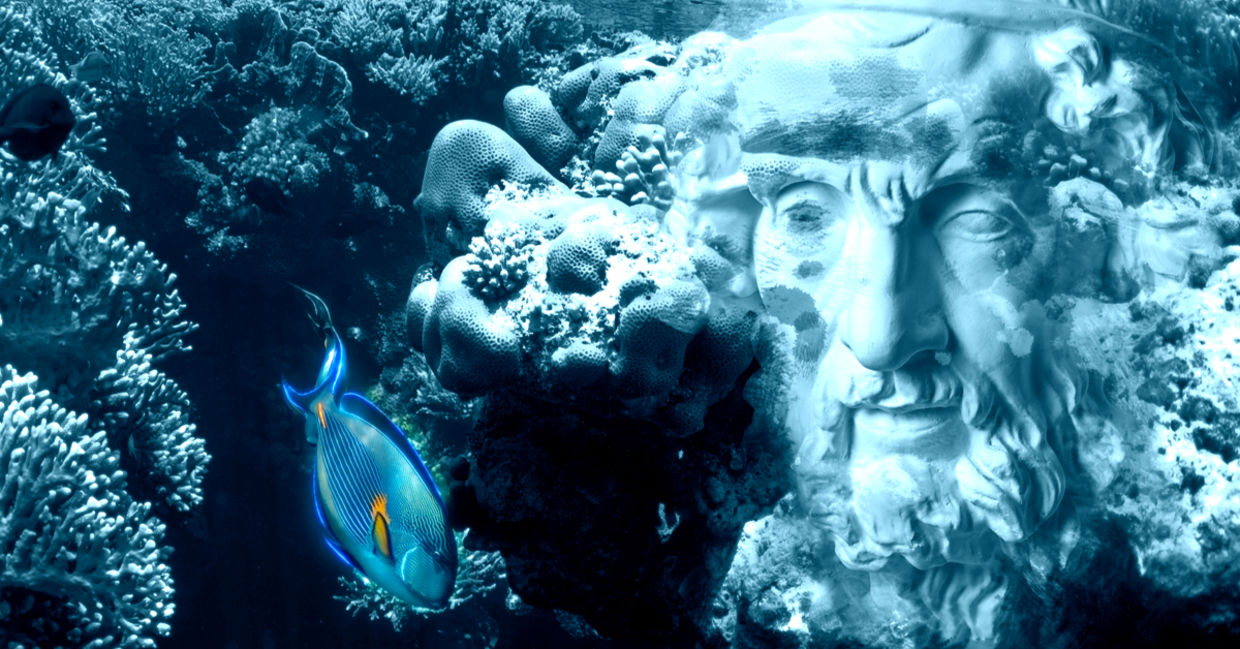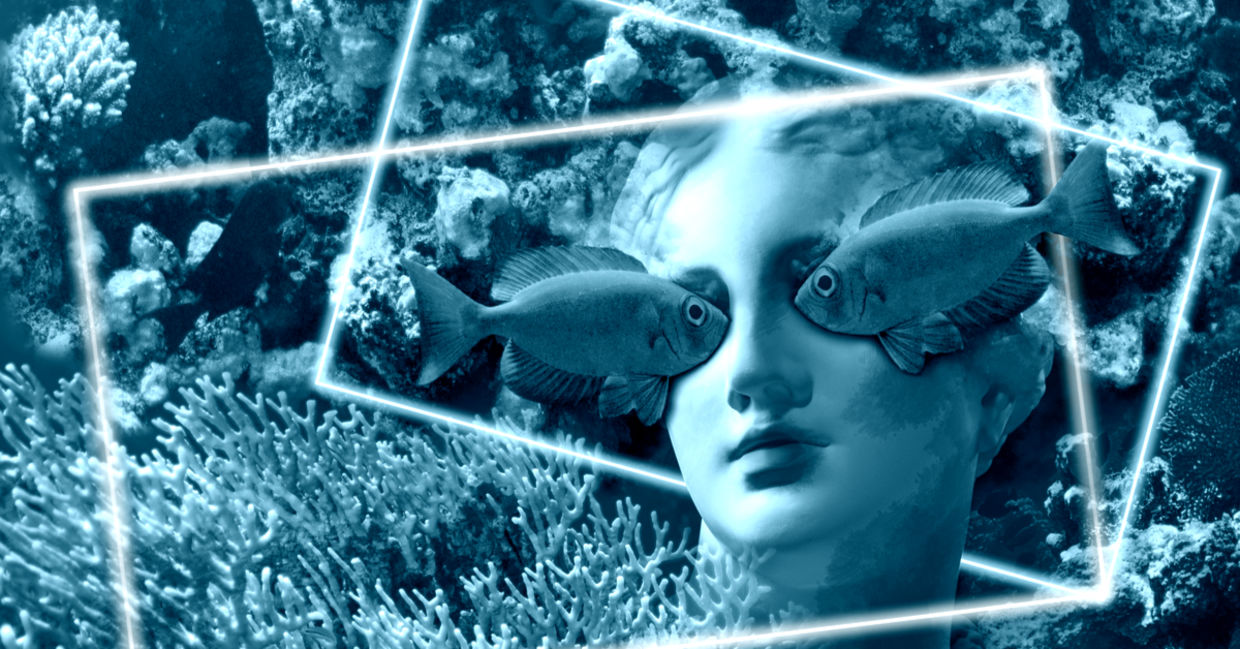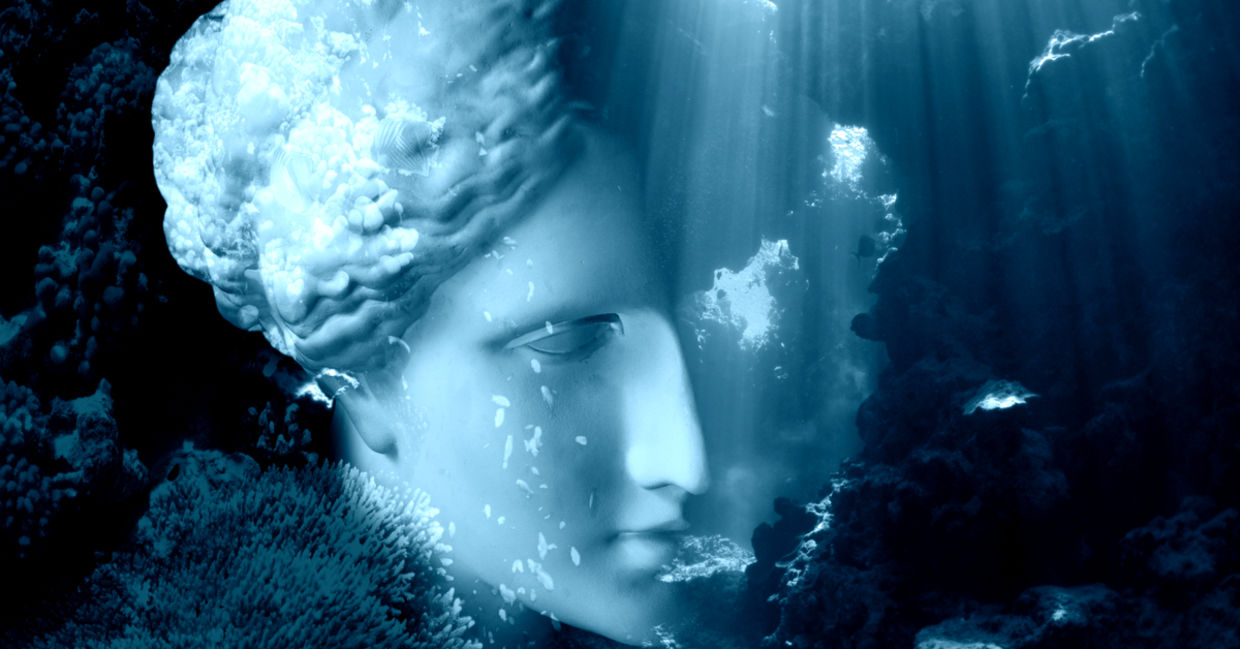
(ded pixto / Shutterstock.com)
In the blue-green depths of the sea off the coast of Tuscany, Italy, an unusual sea floor sculpture park is defending its watery setting. Here, tired with the havoc that illegal trawling had wrecked on the underwater vistas of his marine workplace, and the sustainable ecosystem that supports it, fisherman Paolo Fanciulli has made it his mission to discourage this activity in the most beautiful and poised way possible; through art.
The environmental hazards of illegal trawling
For over four decades — since his teens — Fanciulli has been heading out daily to fish in these coastal waters along the Maremma coastline in search of bream and mullet. But until recently, he was forced to share them with a threatening counterpart: illegal trawling.
It was in the 1980s that he began to notice the clear signs of this activity: a seabed that was becoming barren, with depleted fish stocks.
These illegal “bottom trawlers” indiscriminately spoil vast swathes of ocean life as they fish, dragging a weighted net along the seafloor behind their boats. Specifically, as a National Geographic article on Fanciulli’s art initiative explains, “Bottom trawlers drag their heavy-weighted nets multiple times over the sea floor, scraping it bare and destroying the Posidonia… known as Neptune grass, a flowering seagrass endemic to the Mediterranean, which forms large underwater meadows and acts as a nursery and sanctuary for all marine life.”
This is confirmed by Ricardo Aguilar, senior adviser and expedition leader at the nonprofit conservation organization Oceana to Discover Magazine. He details how they destroy corals, sponges, seaweeds, seagrass and so often the fish that depend on them to create their habitat.
Also, as Discover Magazine reveals, this method sometimes catches endangered sharks or turtles along with its intended fish targets, and young fish too that aren’t large enough to be sold, stymying multiple future generations of fish in the process.
While the very profitable bottom trawling industry is illegal within three nautical miles of the coast of Italy, it is hard to police an almost 500-mile stretch of Italian coastline, so boats continue with their activity but under cover of darkness.
Fanciulli's style of artisanal fishing, in contrast, needs to be sustainable as damaging the ecosystem could threaten its source of income. As he told Discover Magazine: “I understood that the success of my fishing activity was intrinsically linked to the good state of the environment,” or “They were devastating the sea and my way of life,” is how he put it to Euronews. “If the sea dies, so does the fisherman. You can’t just take, you have to give too.”

(ded pixto / Shutterstock.com)
Art works to boost conservation
The underwater “House of Fish” sculpture park, which was begun in 2015, was spurred by this fisherman’s desire to do something that went beyond the handful of concrete blocks he had previously convinced local authorities and some environmental groups to drop into the sea to try and halt illegal trawling.
Concrete blocks or sculptures can break weighted trawler nets and so are a significant deterrent. They can also play a role as artificial reefs, giving corals, sponges and other sea life a place to latch on too, nooks and crannies for juvenile fish to hide in, and varying shade and lighting to help species flourish.
In Fanciulli’s words, as told to Discover Magazine, “One of the most effective solutions is to physically prevent trawling through artificial reefs… so I started working on this project, trying to combine the protection of the seabed with something that could also give an added value to our environment, something as beautiful as a sculpture.”
So, the sculpture park represents both an artistic statement and a physical barrier to seafloor trawling “He [Fanciulli] thought: ‘This is Italy. We do art. If we could put art and conservation together, we might have more impact’,” explains Ippolito Turco, a friend of Fanciulli and president of the nonprofit Casa dei Pesci (house of fish), which they created together to protect the sea in a creative way.
Fanciulli is proud to report that thanks to the submerged sculptures, some species not seen in a long while such as groupers and lobsters have returned. Some of his peers speak of octopuses, damsel fish and even a pod of bottlenose dolphins, which hadn’t been seen for years, returning to these waters.

(ded pixto / Shutterstock.com)
An extraordinary exhibition of other-worldly stone sculptures
Today, 39 huge, other-worldly stone sculptures dot the seabed along a stretch of Tuscan coastline near the town of Talamone. Made of Carrara marble, the chosen material of Renaissance master, Michelangelo, these artworks are already coated with algae, a sign that the natural habitat is being revived.
These artworks include the Ittico Obelisco (fish obelisk) by Massimo Catalani, looking like the remnant of an ancient submerged city, the sculpture named “Acqua” by Giorgio Butini that appears in the Facebook post above, and the colossal head of the Weeping Guardian by acclaimed British artist, Emily Young. Fanciulli also dreams of adding replicas of Roman amphorae (tall jars with handles and a narrow neck) to serve as a natural home for octopus!
National Geographic reports that viewers are welcome to visit this unique underwater museum: “open to anyone either through arranged scuba diving tours or their own dive.”
The moving collection of undersea art should keep their silent watch over Fanciulli’s bay for thousands of years. In the immediate future, this caring fisherman hopes to replicate his stunning solution in the coastal waters higher up the coastline: “Man is still destroying the seas,” he says. “And my mission continues.”






